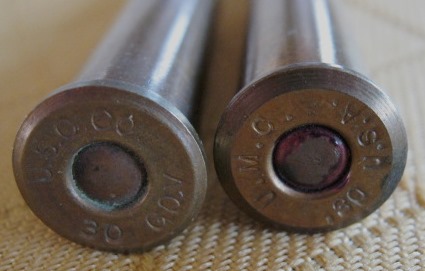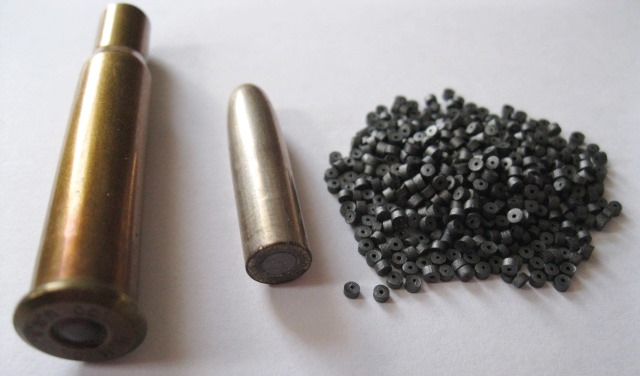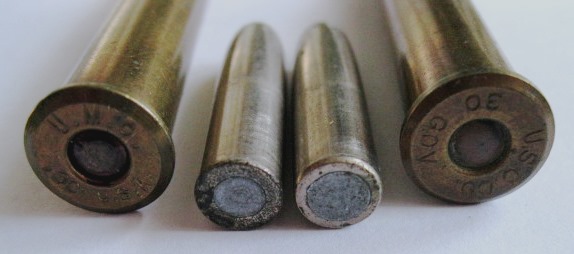When I got home and looked at the cartridges carefully, I found 12 of the 14 rounds had split necks. Only two cartridges were intact.
Since I could pull some of the rounds apart with just finger pressure, I took a few apart to weigh and measure the FMJ bullets. I also weighed the charges of the tubular powder (I.D. - unknown to me).
FWIW - The UMC bullets weighed 219.2 to 219.7 grains and measured .309" diameter. The powder charges averaged 38.5 grains.
The U.S.C. bullets weighed 220.5 grains and measured .309" diameter. The powder charges were averaging around 34 grains.
Both brands of cartridges seemed to have the same propellant. The tubular grains were shorter than the IMR powders I am use to. The powder grains gave a strange mixed gray and charcoal appearance, depending how the light hit them.
Does anyone know if this is Laflin & Rand "WA .30" powder?
The bullet bases varied between makers. The UMC projectiles have sharp edges. The USC bullet bases show a bevel at the edge.
I believe the UMC rounds date from 1911 (or earlier) and the USC Co. rounds date from 1927 (or earlier).
I am toying with scraping the rounds with cracked necks and using just the projectiles.




